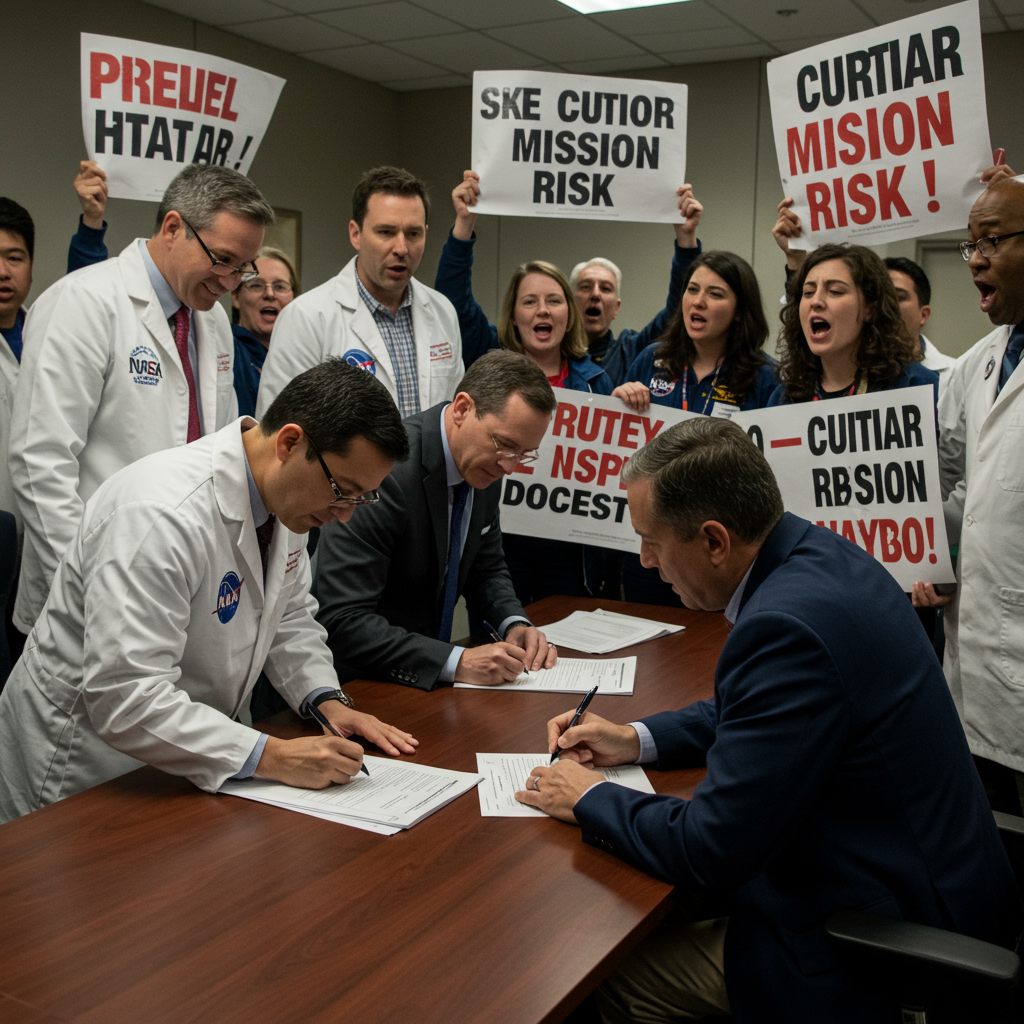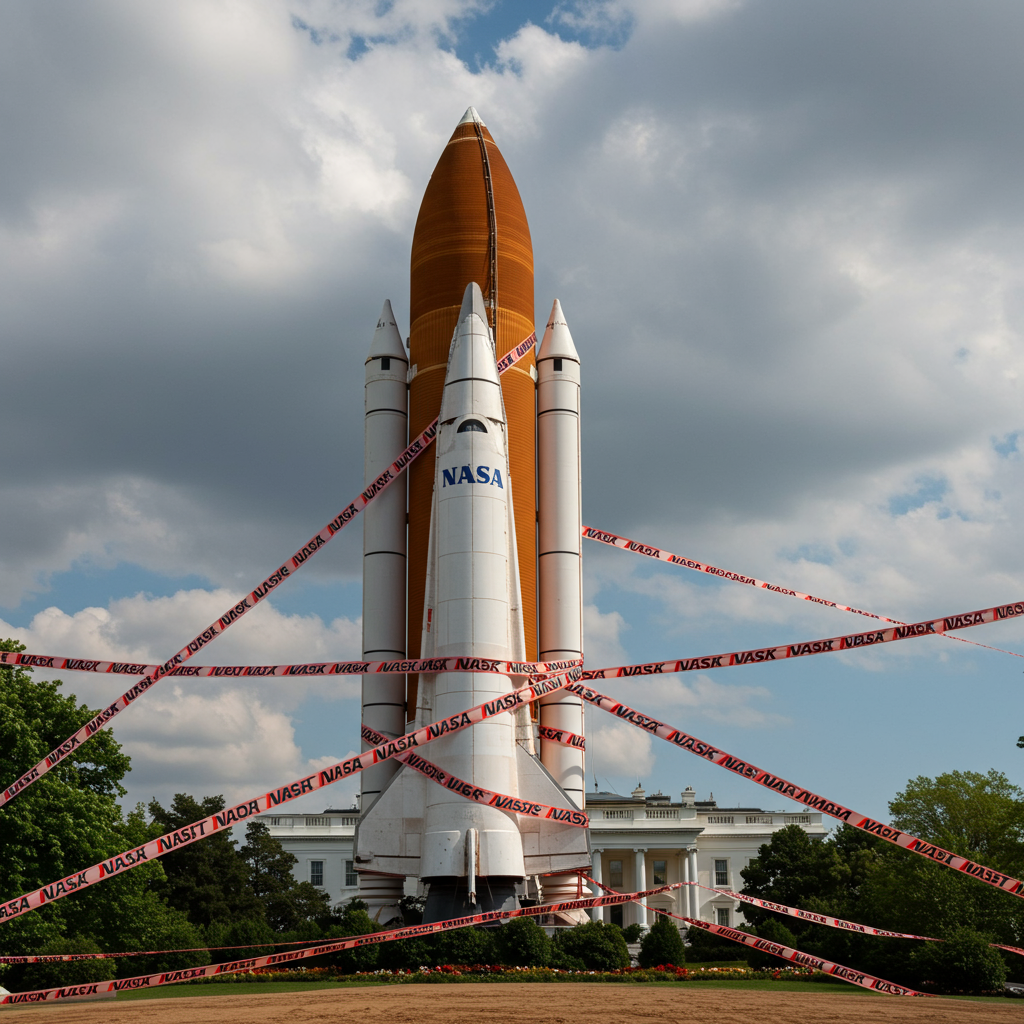Dedicated professionals across NASA have reportedly signed a powerful declaration, voicing profound concerns that recent operational shifts are placing both crucial missions and employee well-being at unprecedented risk. This NASA workers protest highlights a growing unease within the agency, suggesting that vital safety protocols and the very trajectory of scientific advancement are being jeopardized. The move underscores a critical moment for the world’s leading space agency, as its most valuable asset—its expert workforce—signals a potential crisis in organizational culture and strategic direction.
At the heart of the declaration are allegations of “catastrophic impacts” stemming from new directives. While specific details remain under wraps, the collective action by NASA employees speaks volumes about the gravity of their concerns. Their unified stance reflects a deep commitment not only to their personal safety but also to the integrity and success of the space exploration endeavors they passionately pursue. This bold step by a typically discreet workforce demands immediate attention from agency leadership and oversight bodies.
Understanding the Declaration: A Call for Accountability
The declaration signed by numerous NASA workers protest a perceived erosion of the agency’s foundational principles: safety and methodical progress. Such a collective statement, rare in its public nature for an organization like NASA, suggests that internal channels for expressing dissent may have proven insufficient. Employees often resort to public appeals when they believe the stakes are too high to remain silent, especially when potential hazards could impact human lives or multi-billion-dollar missions.
Historically, NASA has faced immense scrutiny over safety following past tragedies. Lessons learned from incidents like the Challenger and Columbia disasters led to significant overhauls in safety culture and decision-making processes. Any perceived deviation from these hard-won standards would understandably trigger alarm among veteran employees who remember these painful chapters. Their declaration serves as an urgent reminder of the delicate balance between innovation, ambition, and an unwavering commitment to safety.
The Core Grievances: Safety, Budget, and Pace
While the exact changes triggering this NASA workers protest are not yet public, common catalysts for such declarations in high-stakes environments often include:
Accelerated Timelines: Pressure to meet ambitious deadlines, potentially leading to shortcuts in testing or development phases.
Budgetary Constraints: Funding reductions that could compromise essential safety redundancies, maintenance schedules, or staffing levels for critical oversight roles.
Shifting Priorities: New leadership directives that might prioritize speed or cost-cutting over meticulous, long-term research and development.
Erosion of Independent Oversight: Concerns that independent safety review boards or whistleblowing protections are being undermined.
Workforce Strain: High-pressure environments leading to burnout and a potential for human error.
These factors, if left unaddressed, could indeed have “catastrophic impacts” on future missions. Whether it’s a manned mission to Mars, the deployment of a new generation space telescope, or the development of advanced aeronautics, the success of these endeavors hinges on meticulous planning, rigorous testing, and the uncompromised judgment of highly skilled professionals.
The Broader Implications for Space Exploration
The concerns raised by NASA employees protest extend beyond internal workplace dynamics; they have significant implications for the future of space exploration and America’s leadership in the field. When employees feel compelled to issue public declarations about safety, it can erode public confidence, affect international partnerships, and even influence congressional funding decisions.
An environment where safety is perceived as secondary can lead to a “brain drain,” where top talent, disillusioned or worried, might seek opportunities elsewhere. Maintaining a robust and dedicated workforce is paramount for an agency that relies so heavily on specialized expertise. Furthermore, any incident stemming from compromised safety protocols could set back years of research and development, costing taxpayers billions and delaying critical scientific discoveries.
Protecting Progress: Why Employee Voices Matter
The notion that changes threaten “progress” alongside safety is particularly poignant. Scientific progress in space exploration is not merely about launching rockets; it’s about pushing the boundaries of human knowledge, developing new technologies, and inspiring future generations. If the very foundation of this progress—meticulous research, rigorous testing, and a culture of open communication—is compromised, the agency’s ability to achieve its ambitious goals will be severely hampered.
Experts agree that employee input is crucial for maintaining integrity in any high-risk industry. Front-line workers often have the most direct insights into operational challenges and potential risks. When their warnings are ignored, the consequences can be dire. The declaration from NASA workers serves as a critical feedback mechanism, an urgent signal that leadership must re-evaluate its strategies and engage constructively with its workforce to safeguard the agency’s vital mission.
Responding to Dissent: A Path Forward for NASA Leadership
The ball is now firmly in the court of NASA leadership and relevant government oversight bodies. A robust and transparent response is essential to address the NASA workers protest and restore confidence. This would ideally involve:
Open Dialogue: Initiating immediate, open, and transparent discussions with the employees and their representatives who signed the declaration.
Independent Review: Commissioning an independent, external review of the alleged changes and their potential impact on safety and progress.
Reaffirmation of Safety Culture: Publicly reaffirming NASA’s unwavering commitment to safety as its top priority, backed by concrete actions and resource allocation.
Protecting Whistleblowers: Ensuring that employees who speak out are protected from retaliation and that their concerns are taken seriously.
Adjusting Policies: Being prepared to reverse or modify policies that are genuinely found to compromise safety or impede scientific progress.
Ignoring the declaration could have far-reaching and detrimental effects on NASA’s reputation, its workforce morale, and ultimately, its ability to execute its unparalleled mission of exploring the cosmos. The current situation presents both a challenge and an opportunity for the agency to reinforce its commitment to excellence, integrity, and the well-being of its extraordinary people.
Frequently Asked Questions
What are the key concerns raised by the NASA workers’ declaration?
The core concerns highlighted by the declaration revolve around perceived threats to both safety protocols and the agency’s capacity for scientific progress. While specific details aren’t public, such protests typically arise from issues like accelerated project timelines, potential budget cuts affecting critical safety measures, a perceived erosion of independent oversight, or new directives that employees believe compromise the meticulous standards necessary for space exploration. The workers fear these changes could lead to “catastrophic impacts” on future missions and personnel.
How can employee concerns about safety be formally addressed within large agencies like NASA?
Within large government agencies like NASA, employee concerns about safety are typically addressed through established internal channels such as ethics offices, dedicated safety review boards, union representatives (if applicable), and whistleblower protection programs. When these internal mechanisms are perceived as ineffective or insufficient, employees may resort to more public actions, such as signing declarations or contacting oversight bodies like Congress, to draw attention to critical issues and push for accountability and change.
What potential impacts could widespread employee dissent have on NASA’s future missions?
Widespread employee dissent, as indicated by this declaration, could have several significant impacts on NASA’s future missions. It can lead to decreased morale and productivity among the workforce, a potential loss of critical talent if employees feel their concerns are ignored, and a decline in public trust and support for the agency. More gravely, if the underlying safety concerns are valid and unaddressed, it could increase the risk of mission failures, jeopardizing human lives, expensive hardware, and years of scientific investment, ultimately hindering long-term progress in space exploration.




